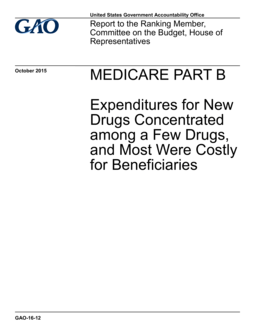Hello! You're looking at a policy document report on Overton
We track government policy, guidelines, think tank research, working papers and more to help our customers see the impact and influence of their work. Are you interested in seeing what information we have to offer? Request a free trial to our platform.
If you fund, produce or manage research or work to influence policy, we'd love to talk. Learn more on our homepage.

Identifiers
Overton ID
gaogov-3a1447a195173995f64dd3fda05e78e5
Medicare Part B: Expenditures for New Drugs Concentrated among a Few Drugs, and Most Were Costly for Beneficiaries
New Medicare Part B drugs were more likely than new drugs not paid under Part B to be biologics, that is, products derived from living sources; be approved to treat a narrower range of conditions; and to have used a Food and Drug Administration (FDA) program to expedite their development and review.
Topics in this document
Pharmaceutical sciences
New Drug Application
Clinical trial
Food and Drug Administration
Priority review
Drug development
Orphan drug
Biopharmaceutical
Phases of clinical research
Fast track (FDA)
Government Accountability Office
Health care
Pharmacy
Health
Medical specialties
Drugs
Health sciences
Health policy
Pharmacology
Clinical medicine
Medicine
Medical treatments
Healthcare industry
Medicare (United States)
Breakthrough therapy
Federal Food, Drug, and Cosmetic Act
Medical research
Cancer
Medicinal chemistry
Medicare Part D
Related SDGs
SDG 3: Good Health and Well-being ...
SDG 3: Good Health and Well-being
Target 3.8
Achieve universal health coverage, including financial risk protection, access to quality essential health-care services and access to safe, effective, quality and affordable essential medicines and vaccines for all
Citations
Cited by 24
other policy documents
(21 of them are from other policy sources)
